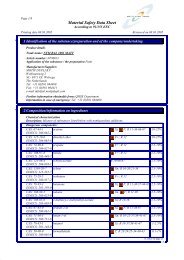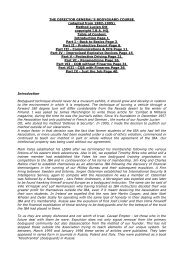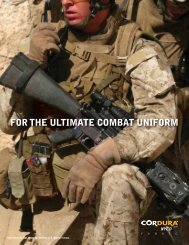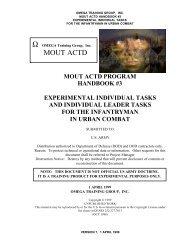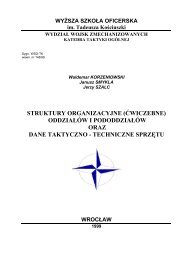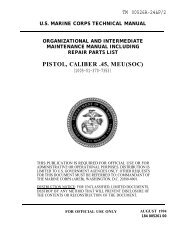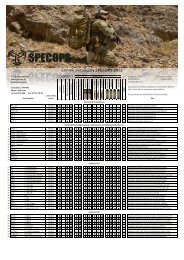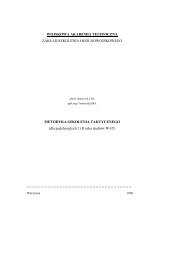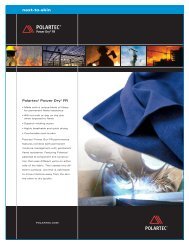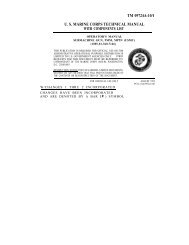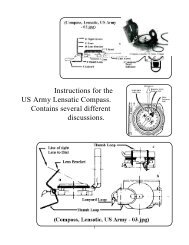mout actd program handbook #1 experimental tactics ... - SpecOps
mout actd program handbook #1 experimental tactics ... - SpecOps
mout actd program handbook #1 experimental tactics ... - SpecOps
You also want an ePaper? Increase the reach of your titles
YUMPU automatically turns print PDFs into web optimized ePapers that Google loves.
OMEGA TRAINING GROUP, INC.<br />
MOUT ACTD HANDBOOK <strong>#1</strong><br />
EXPERIMENTAL TACTICS, TECHNIQUES, AND PROCEDURES<br />
FOR THE INFANTRY RIFLE PLATOON AND SQUAD IN URBAN COMBAT<br />
_____________________________________________________________________________<br />
b. Target Engagements. In the city, the ranges of observation and fields of<br />
fire are reduced by structures as well as by the dust and smoke of battle. Targets are<br />
usually briefly exposed at ranges of 100 meters or less. As a result, combat in built-up<br />
areas consists mostly of close, violent combat. This requires strict fire control and<br />
proper identification of friend or foe. Infantry will use mostly light and medium antitank<br />
weapons, automatic rifles, machine guns, and hand grenades. Opportunities for using<br />
antitank guided missiles are restricted because of the short ranges involved and the many<br />
obstructions that interfere with missile flight. Danger close is normal for use of indirect<br />
fires in most firefights.<br />
R-8, Remote Marking Munitions: The M203 TPT round used as a remote<br />
marking munition could mark the sniper’s suspected or known location for targeting<br />
by tanks, BFVs, or direct fire artillery, if the ROE permit.<br />
WARNING<br />
The M203 TPT round has a metal projectile body that can ricochet and<br />
cause injuries.<br />
c. Small Unit Battles. Units fighting in built-up areas often become isolated or<br />
feel like they are isolated, making combat a series of small-unit battles. Soldiers and<br />
small-unit leaders must have the initiative, skill, and courage to accomplish their<br />
missions while isolated from their parent units. A skilled, well-trained defender has<br />
tactical advantages over the attacker in this type of combat. The defender occupies<br />
strong covered and concealed static positions and conducts three-tier ambushes, whereas<br />
the attacker must be exposed in order to advance. Greatly reduced line-of-sight ranges,<br />
built-in obstacles, and compartmented terrain require the commitment of more troops for<br />
a given frontage. While the defense of an urban environment can be conducted<br />
effectively with relatively small numbers of troops, the troop density required for an<br />
attack in built-up areas can be as much as five times greater than for an attack in open<br />
terrain. Individual soldiers must be trained and psychologically ready for this type of<br />
operation.<br />
d. Munitions and Special Equipment. Forces engaged in fighting in built-up<br />
areas use large quantities of munitions because of short ranges, limited visibility,<br />
briefly exposed targets, constant engagements, and requirements for suppression. M72<br />
LAWs, Ranger Antiarmor Weapons Systems (RAAWS/Carl Gustavs), AT-4s, rifle and<br />
machine gun ammunition, 40-mm grenades, hand grenades, and explosives are highusage<br />
items in this type of fighting. When possible, those items should be either<br />
stockpiled or brought forward on-call, so they are easily available.<br />
_____________________________________________________________________________<br />
1-8<br />
VERSION 7, 1 APRIL 1999



